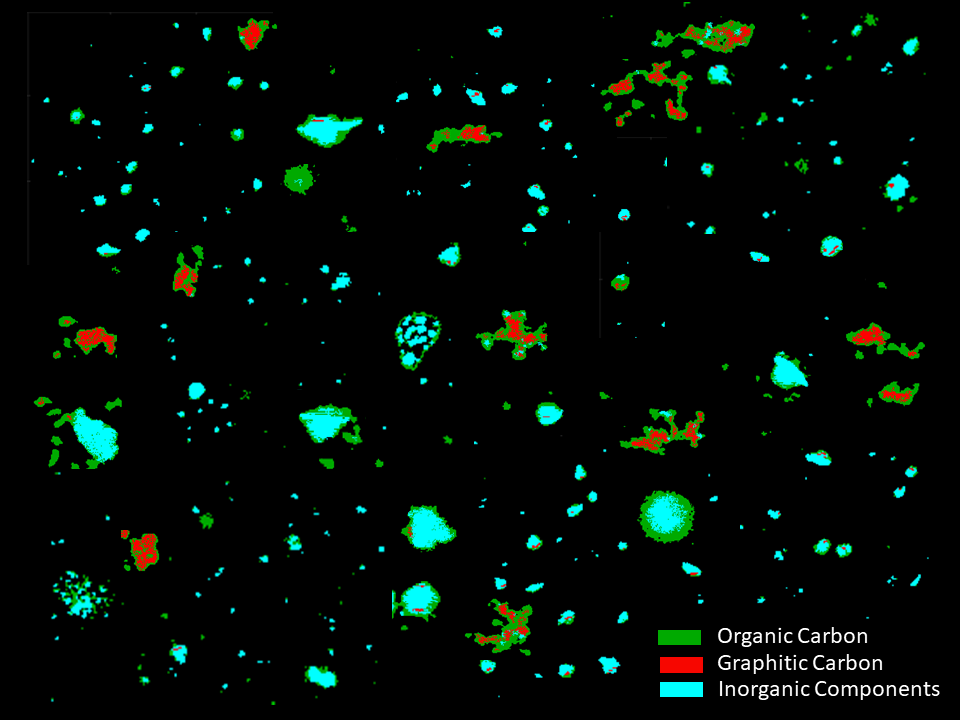Chemical imaging of atmospheric particles
Submitter:
Laskin, Alexander — Purdue University
Moffet, Ryan — Sonoma Technology Inc.
Area of research:
Aerosol Properties
Journal Reference:
Science
This invited review paper presents a synopsis of modern advances in chemical imaging of atmospheric particles collected on substrates during field and laboratory experiments. Discussed chemical imaging approaches provide unique experimental insights on the nature and sources of particles, understanding their physical properties, atmospheric reactivity, and transformations.
Impact
Chemical imaging data provide unique experimental input for atmospheric models that simulate aging and changes in particle-type populations, internal composition, and their associated optical and cloud forming properties. We highlight applications of chemical imaging in selected recent studies, discuss their existing limitations, and forecast future research directions for this area.
Summary
Airborne particles are very dynamic and highly reactive components of the Earth’s atmosphere. Their high surface area and water content provide a unique reaction environment for multiphase chemistry that continually modifies particle composition and properties that consequently impact air quality as well as concentrations of gas-phase species. By absorbing and scattering solar and terrestrial radiation, particles directly influence the planet’s radiative balance. Their indirect effects include modifying the nucleation, lifetime, and physical properties of clouds. Due to the sensitivity of the atmospheric environment to all these variables, fundamental studies of chemical transformations of atmospheric particles, their sources, continuously evolving composition, and physical properties are of highest research priority. Accurate descriptions of particles and their effects in the atmosphere require comprehensive information not only on the particle-type populations and their size distributions and concentrations, but also on the diversity and the spatial heterogeneity of chemical components within individual particles. Developments and applications of modern chemical imaging approaches for off-line characterization of atmospheric particles have been at the forefront of modern experimental studies and have resulted in a transformative impact in atmospheric chemistry and physics. The unique advantage of chemical imaging methods is that they simultaneously provide two analytical measurements: imaging of particles to assess variability in their individual sizes and morphology, as well as particle-specific speciation of their composition and spatial heterogeneity of different chemical components within individual particles.
We also highlighted approaches that enable chemical imaging of particles with different levels of elemental and molecular specificity, including applications of multi-modal methodologies in which the same or similar groups of particles are probed by two or more complementary techniques. These developments provided new experimental platforms to study internal and external mixing states of the real-world particles and their laboratory proxies, probing their hygroscopic and cloud-forming properties, multi-phase reactivity, aging transformations, and evolution of optical properties.

